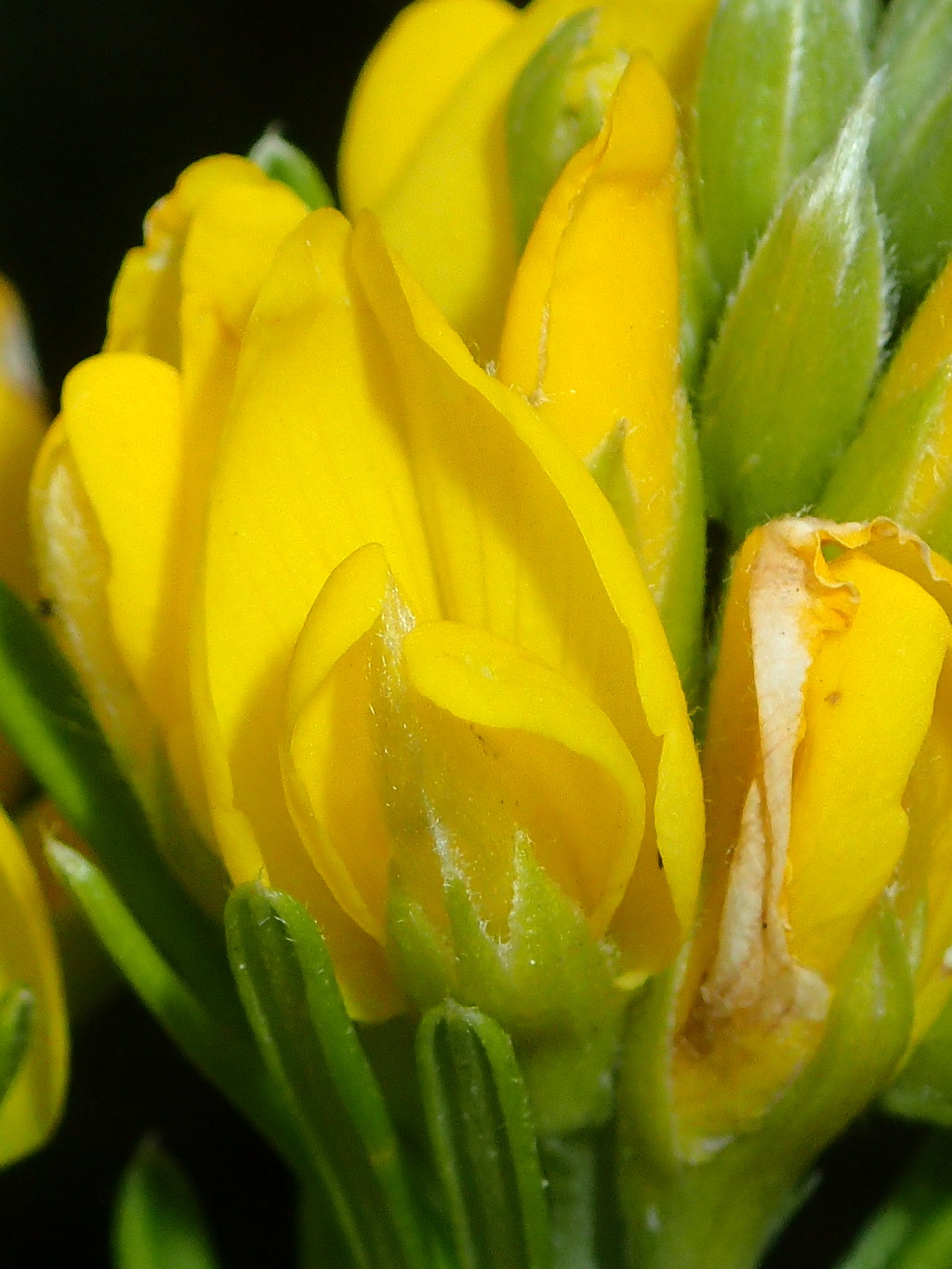Genista linifolia
L. Flax-leaf BroomErect or spreading shrub to 3 m tall; stems appressed-pubescent, ribbed. Leaves trifoliolate; leaflets linear-oblanceolate, 1–2.5 cm long, 0.5–4.5 mm wide, more or less sessile, dark green and glabrescent above, paler and appressed-pubescent below, margins recurved or revolute, apex mucronate; stipules absent. Flowers 3–16 in congested or lax terminal raceme; bract subulate, to c. 4 mm long, pubescent, distal on pedicel; bracteoles subulate, to c. 3 mm long, pubescent, attached at base of calyx. Calyx 6–10 mm long, pubescent, teeth longer than tube; corolla 10–15 mm long; standard uniformly silky-haired. Pod narrow-oblong, 13–30 mm long, densely pubescent; seeds 2–6, ovoid to globose, c. 3 mm long, olive-green, aril orange. Flowers mainly Aug.–Nov.
Wim, Brid, VVP, VRiv, MuF, GipP, OtP, WaP, Gold, CVU, GGr, DunT, NIS, HSF, HNF, OtR, Strz. Also naturalised WA, SA, Qld, NSW, Tas. Native to the Mediterranean area. A garden or hedge plant that has become established mainly in southern Victoria, particularly on the Mornington Peninsula, and readily invades disturbed areas such as roadsides, fence-lines and grazing land. Declared a noxious weed in Victoria.
Jeanes, J.A. (1996). Fabaceae. In: Walsh, N.G.; Entwisle, T.J., Flora of Victoria Vol. 3, Dicotyledons Winteraceae to Myrtaceae, pp. 663–829. Inkata Press, Melbourne.
 Spinning
Spinning



